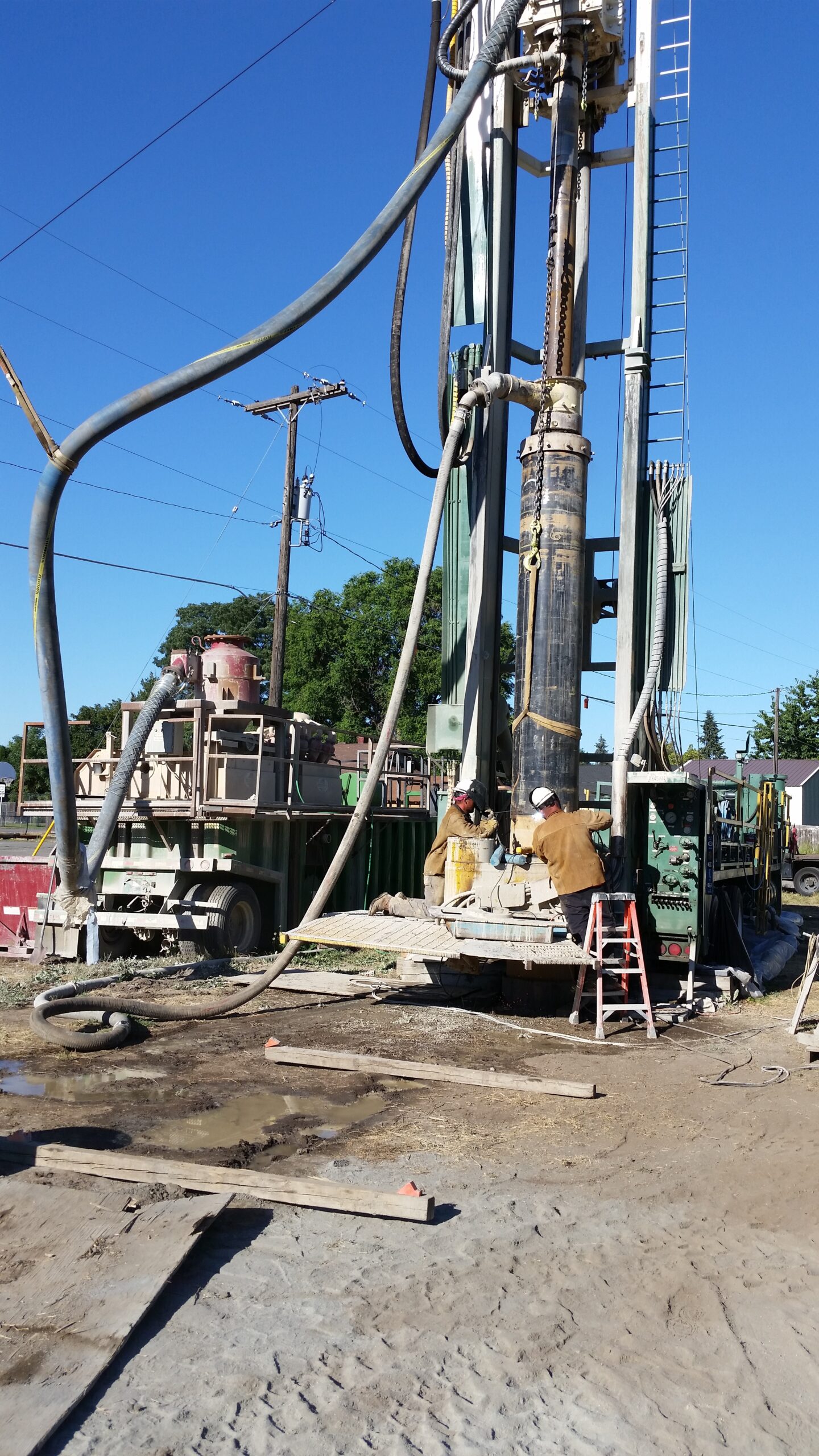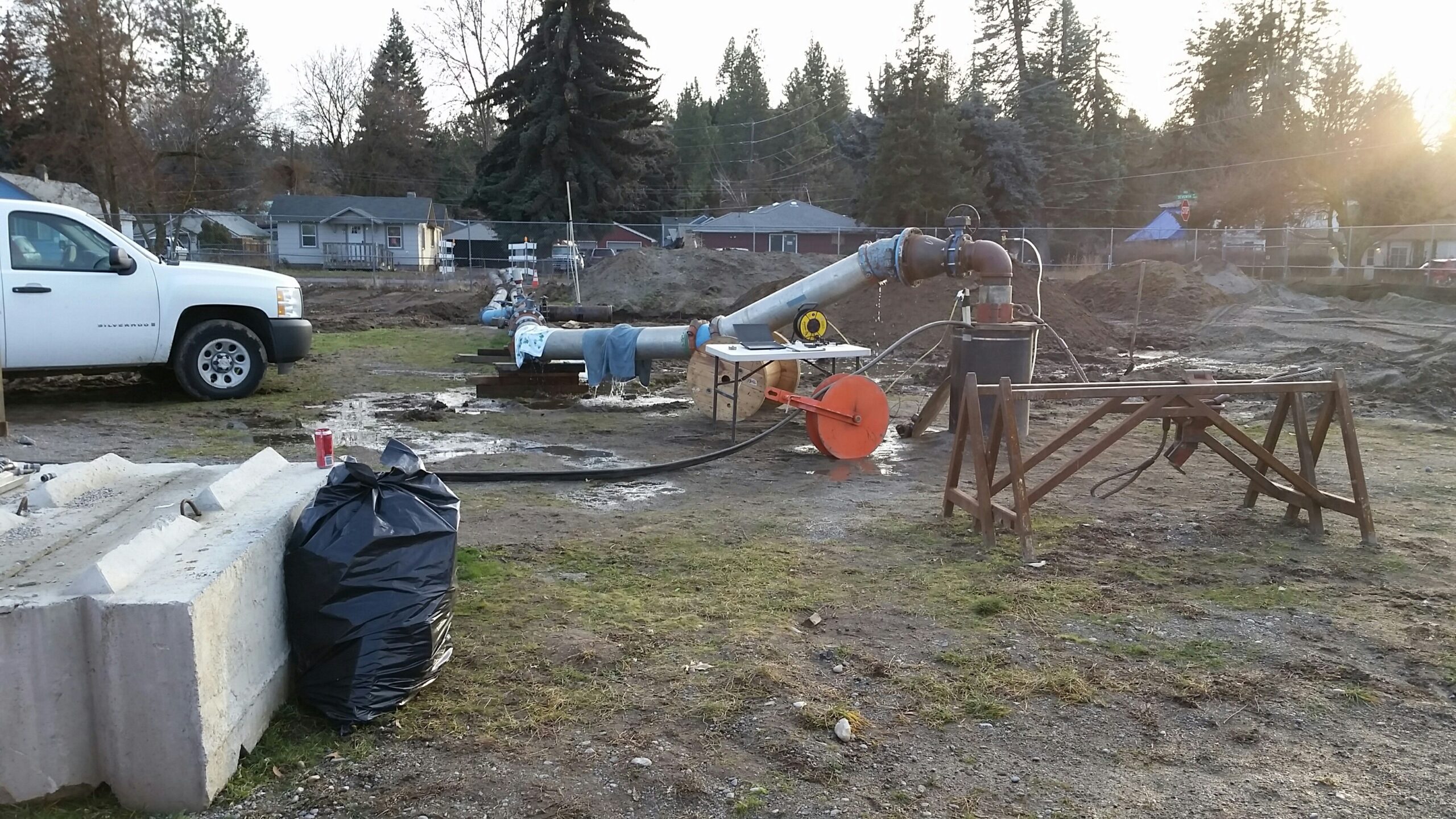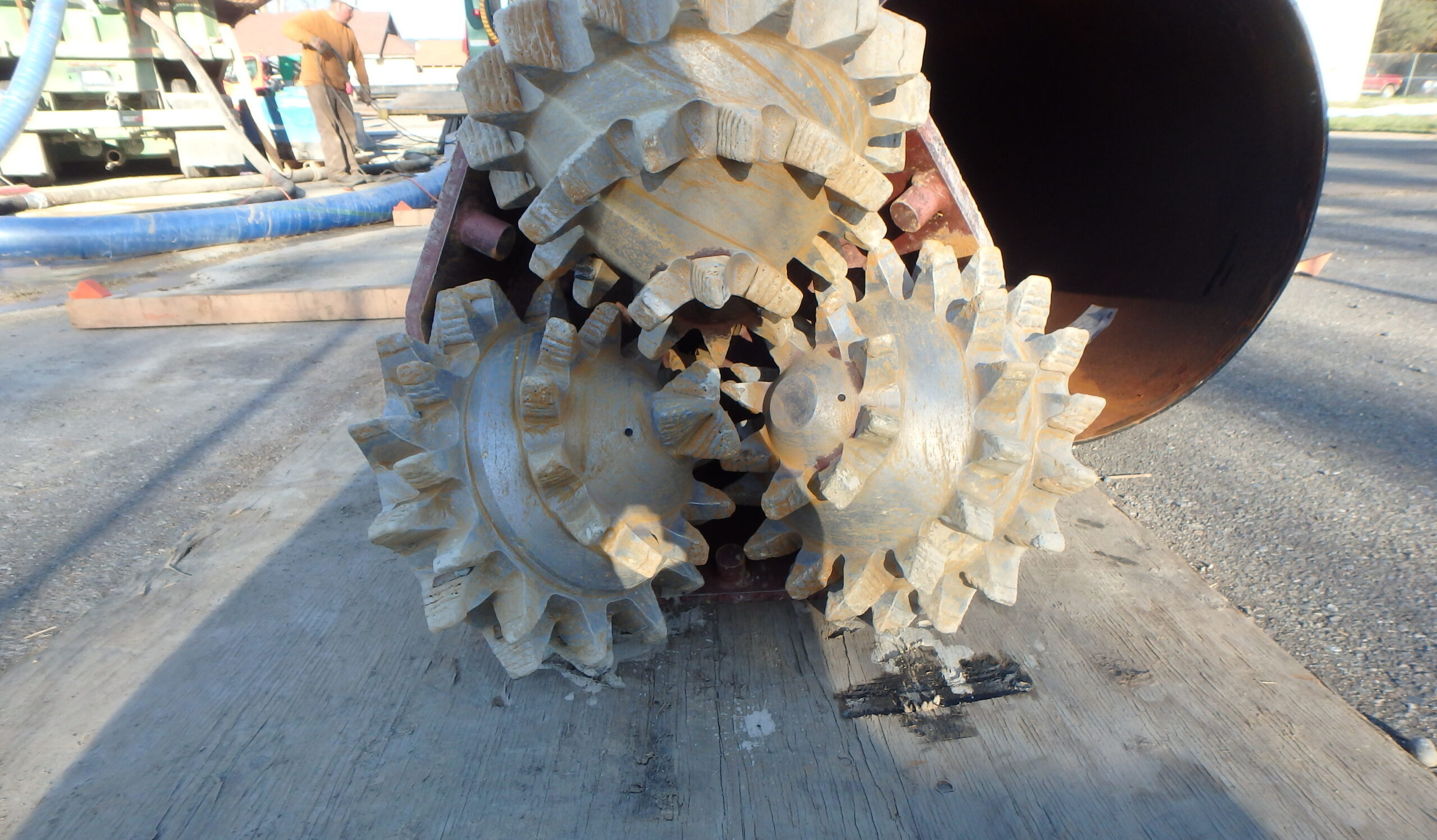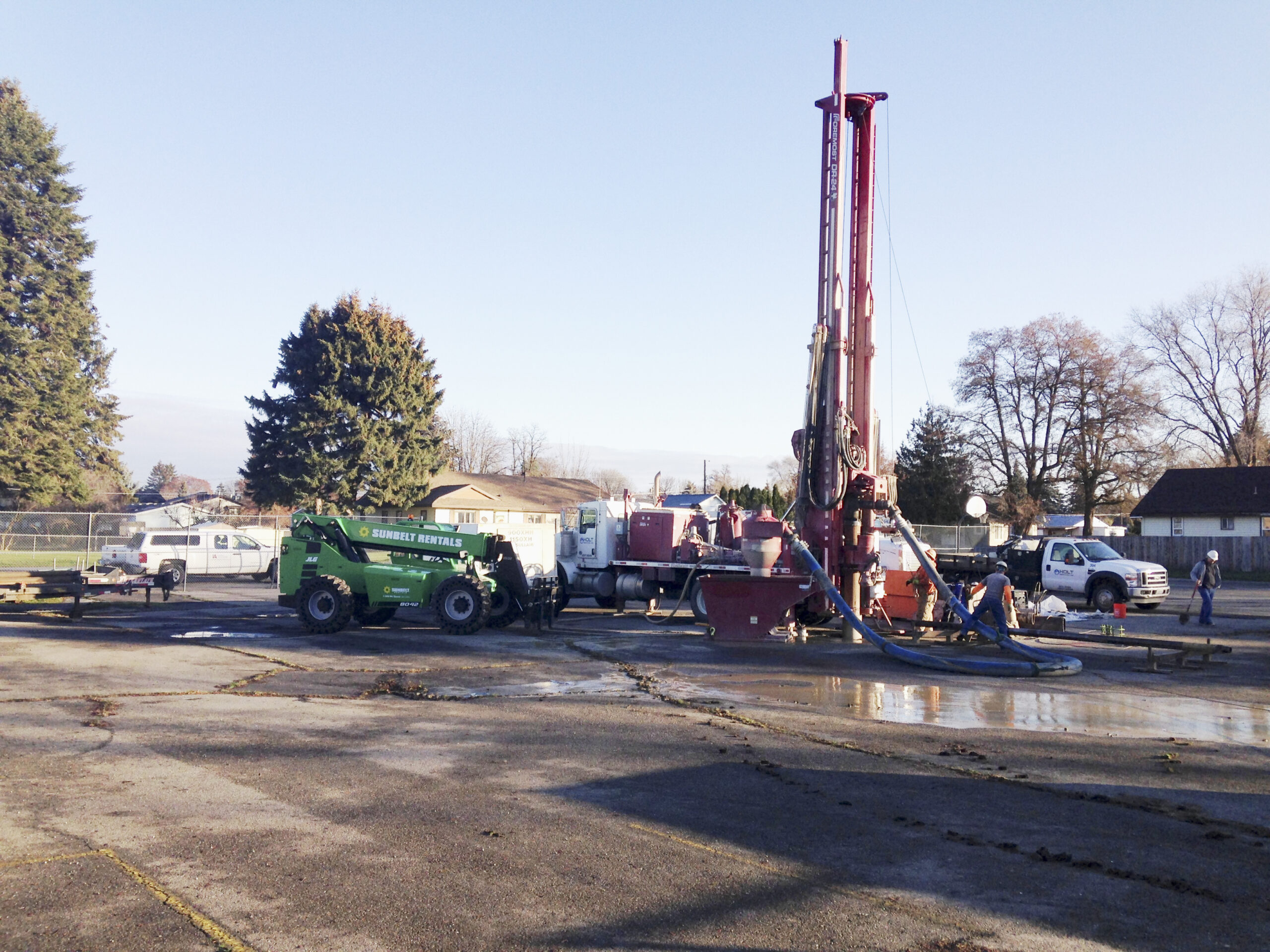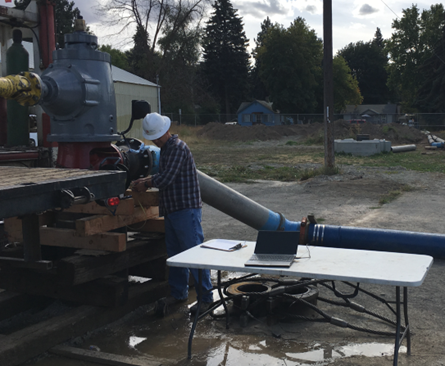Project Details
- Water Resources
Client
City of Spokane and GSI Water Solutions, Inc.
Date
2016 – 2019
Location
Spokane, WA
Team Members
Benjamin Lee, PE, CWRE
Eric Weber, LHG, CWRE
Shane Kostka, LG
City of Spokane – Havana Street Wellfield
The City of Spokane has several well stations with large-diameter, shallow caisson wells and wellfields located within the Spokane Valley-Rathdrum Prairie Aquifer that supply potable water to City residents. The well stations were developed from the 1930s to the 1950s. In the mid-2000s, the City identified the need for a new, modern wellfield to increase water supply redundancy and reliability. Additionally, in 2016, the Yellowstone Pipeline Company received approval to install a new 10-inch-diameter, refined petroleum products pipeline in close proximity to two of the City’s existing well stations. In order to minimize contamination risks and optimize water system performance, the City partnered with Landau Associates and a consultant team to develop a new, 22,500-gallons-per-minute (gpm) groundwater supply source at their Havana Street property to supplement their Group A public water supply system.
The Challenge
The Havana Street site was initially selected based on its location relative to the Spokane River, the specific river stream reach, and property availability. However, the suitability of the site had to be established based on hydrogeologic criteria and contaminant . After the final site selection, the primary challenge was developing and implementing an appropriate well and wellfield design.
Six 24-inch production wells were installed on a 0.3-acre parcel. The combined sustainable well yield of the wells is estimated at 22,500 gpm.
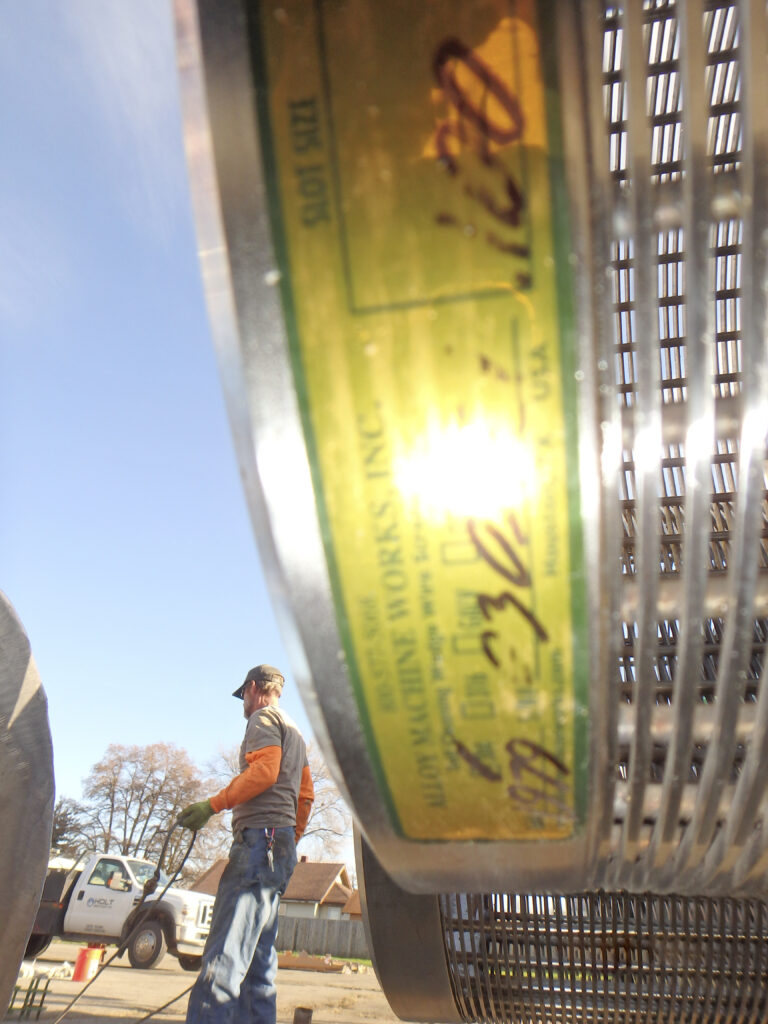
Our Approach
Landau determined site susceptibility through review of environmental databases, contaminated site inventories, and maps available from the Washington Department of Health Source Water Assessment Program. This data was reviewed in the context of a preliminary hydrogeologic conceptual model developed from existing geologic reports, nearby well logs, and review of the City’s existing numerical groundwater flow model. The hydrogeologic conceptual model was used to estimate a minimum sustainable wellfield yield of 10,000 gpm. A pilot test well was drilled and tested to verify and refine the hydrogeologic conceptual model. The refined model was then used to develop a final wellfield design, individual well screen designs, and design pumping rates. Water quality testing was performed to verify the site susceptibility assessment.
The Solution
Six 24-inch-diameter production wells were installed on the 0.3-acre Havana Street parcel. Following well development, step-rate pumping tests were performed at each well at successively increasing rates of 2,000; 3,000; and 4,000 gpm. A 12-hour constant rate pumping test was completed at Well 5 at a pumping rate of 4,000 gpm.
The combined sustainable well yield of the wellfield was estimated at 22,500 gpm. Water quality testing confirmed the wells provided a high-quality potable water supply.
Landau’s collaborative work with GSI on this project allowed the City to both accurately evaluate the feasibility ofthe Havana Street site and develop a Wellfield design that will provide a reliable water source to meet the City’s water demand well into the future.
